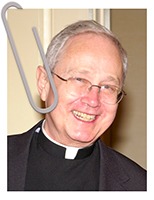Which do people prefer? – “Whack-a-mole” or “Big picture” thinking”
It occurs to me that there are two approaches to problem solving. – “Whack-a-mole” or “Big Picture”.

In the “whack-a-mole” approach focus is on immediate problems as they pop-up. But we can solve one problem only to see it appear again and again.
The “big picture” approach tries to understand what it is the problem behind the problem and what can be done to prevent it. But sometimes we miss the immediate crisis.
When a person is bleeding or starving there is no time to to puzzle out what could have been done to prevent this. On the other hand, we are doomed to play “whack-a-mole” because we do not look at the big picture and root causes of the problem.
Now before we go any further, let me be clear! Images do not always capture the whole story. And, although often presented as either/or, the operative word should not be “or” but “AND” (sometimes referred to the Vincentian “and”). We need to address immediate needs as they pop-up. But we must also seek an understanding of the “big” picture” of why the same problems keep popping up.
Pope Francis uses both methods
Pope Francis is certainly aware of problems that that pop up all over. Looking out his window he can catalog so many problems clamoring for his attention.
And, with so many problems he is criticized by those who feel he is not addressing their problem the way they would like him to.
Personally, I must admit that one of the things I like about Pope Francis is that he helps me see the “big picture”.
He draws our attention to the big picture in two of his major writings – Evangelii Gaudium and Laudato Si. He describes the interrelatedness of so many problems with the insight that they are all manifestations of a “throwaway culture” or a “culture of waste” rooted in individualism and “me first”. He draws our attention to the loss of awareness of solidarity of being “our brother’s keeper” and that we live in God’s house, the created world. In both, he calls for personal conversion.
Vincent’s approach to problem solving
I see many similarities with Vincent’s approach” to solving problems.
Vincent taught us it is not either spiritual poverty or material poverty. True, he raised and distributed the equivalent of millions of dollars to address specific problems such as starvation. At the same time, he addressed the spiritual poverty of his day by going from parish to parish preaching missions.
I have only late in my life come to appreciate how he addressed root causes of the specific problems that pop up.
Instinctively he addressed he formation of the clergy by identifying and inspiring parish clergy and, eventually being instrumental in forming a network of seminaries to form dedicated clergy to pick up where his missions left off.
Instinctively he realized that laity, especially women, were an untapped resource He creatively found a way to get around the ecclesiastical restriction of his day. He organized laity for the needed charitable work in what we called “Confraternities” With the Daughters of Charity he found a creative way to make it possible for women to dedicate their lives to the service of those in need in a way that had not been open to them before.
Questions
- Am I a “whack-a-mole” person by nature or a “big picture” person?
- How do I handle my frustrations playing “whack-a-mole” or working for clarity about a bigger vision.?
- Do I ever ask what is the problem behind the problem and miss the problem right in front of me?


A most useful analogy, especially in the way it’s applied to both Vincent and Pope Francis.
The response to the immediate need generates the encounter that puts questions to any long term vision in order to ground it in reality. Otherwise ideas rule. Vincent was keen on saying that he never imagined what actually came into place, but he did follow providence, and we are all witnesses to the his wisdom.
About asking “what is the problem behind the problem” and yet without missing the problem right in front of me, I’d just like to say that Jesus embodies both not missing the problem at hand and seeing the problem behind the problem.
He did not miss the problem in front of him: He went about “towns and villages, teaching in their synagogues, proclaiming the Gospel of the kingdom, and curing every disease and illness,” and asking folks to “guard against greed.”
He addressed at the very outset the problem behind the problem: “He began to preach and say, ‘Repent, for the kingdom of heaven is at hand.’”
And those who follow in Jesus’ and Vincent’s footsteps seem to me to have their work cut out for them. For I find quite troubling the report from NCRonline that “priests, parishes share Viganò’s letter to Trump.” Notwithstanding that America Magazine’s James T. Keane urges readers not to pay attention to Viganò.
I like to think that most of my life I was a systems guy – I tried to understand the system that brought about whatever happened and tried to make changes. Obviously, no one can live in that world exclusively. So many emergencies surface that only can be dealt with as such. However, as the article points out, we have to take those emergencies to examine the systems that failed so we can prevent or minimize the effect of future emergencies. Not always an easy task, especially with systemic problems like poverty and racism.
By the way, I neglected to mention that this was actually a good “Father’s Day” article. So much of what parents have to deal with are crises and emergencies and they take steps to try and minimize or eliminate those situations in the future. As a father, I can appreciate the both/and nature of the article.